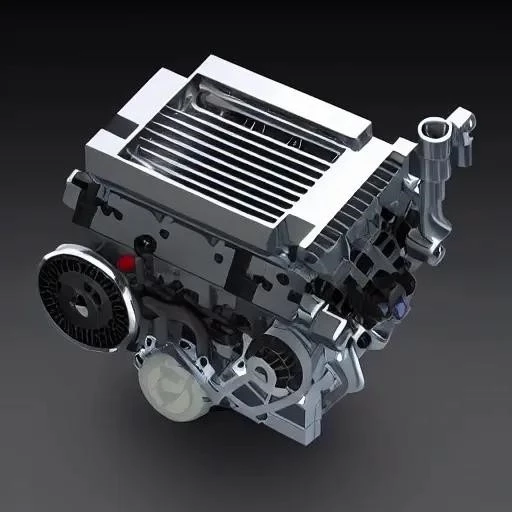The world of automotive engineering is a relentless crucible of innovation, constantly pushing the boundaries of what’s possible beneath the hood. Each year marks a new chapter in the enduring quest for enhanced performance, unparalleled efficiency, and an increasingly sophisticated driving experience. In this ever-evolving landscape, certain years stand out as pivotal, moments when technological leaps transformed aspirations into tangible realities. Such was the remarkable period surrounding 2015, a truly exhilarating era that witnessed a groundbreaking synthesis of raw power and refined intelligence in the very heart of our vehicles. Manufacturers, driven by consumer demand and stringent environmental regulations, were compelled to reimagine propulsion systems from the ground up, forging a path towards engines that were not just powerful, but also remarkably resourceful.
As the gears of progress turned, 2015 emerged as a watershed year, showcasing a breathtaking array of engines that redefined expectations for drivers across the globe. From the thunderous roar of precision-engineered V8s to the whisper-quiet efficiency of advanced four-cylinders, the automotive industry celebrated a dynamic blend of traditional might and cutting-edge ingenuity. These were not merely incremental improvements; rather, they represented paradigm shifts, meticulously crafted powerplants that harmonized fuel economy with thrilling acceleration, proving that drivers no longer needed to compromise. The engines crowned as the best car engines 2015 were paragons of engineering artistry, setting formidable benchmarks for the years that followed and decisively shaping the trajectory of vehicular propulsion.
| Engine | Key Features & Innovations | Notable Achievements (2015) | Impact & Legacy |
|---|---|---|---|
| Ford 2.7L EcoBoost V6 | Twin-turbocharging, direct injection, compacted graphite iron block for lightweight strength. Achieved V8 power with V6 efficiency. | WardsAuto 10 Best Engines winner (2015). Praised for its robust performance and remarkable fuel economy in vehicles like the F-150. | Solidified EcoBoost’s reputation, proving smaller displacement engines could deliver significant power without sacrificing efficiency. Paved the way for broader V6 adoption in trucks. |
| GM 6.2L LT1 V8 | Direct injection, active fuel management (cylinder deactivation), continuously variable valve timing. Balanced immense power with surprising efficiency. | WardsAuto 10 Best Engines winner (2015). Lauded for its intoxicating power delivery and advanced technology in the Corvette Stingray and Camaro. | A testament to the enduring appeal and technological advancement of the pushrod V8, setting new standards for American performance engines while improving fuel economy. |
| Volvo 2.0L Drive-E T6 I4 | Unique supercharger and turbocharger combination (twin-charging), direct injection. Delivered high output from a small displacement. | WardsAuto 10 Best Engines winner (2015). Recognized for its ingenious engineering, delivering 302 hp from a four-cylinder, competitive with larger V6s. | A bold statement in engine downsizing, proving that forced induction could deliver premium performance and efficiency, pushing the industry towards sophisticated four-cylinder powerplants. |
| BMW N55 3.0L Turbo I6 | Single twin-scroll turbocharger, Valvetronic (variable valve lift), High Precision Injection. Known for its smooth power delivery and broad torque band. | Multi-year WardsAuto 10 Best Engines winner, including 2015. Celebrated for its exemplary balance of performance, refinement, and fuel efficiency across various BMW models. | Continued BMW’s legacy of exceptional inline-six engines, setting a high bar for luxury performance and influencing subsequent turbocharged designs across the industry. |
For further details on these and other top engines, visit WardsAuto.com.
One exemplary marvel from this period was the Ford 2.7L EcoBoost V6, a true workhorse that defied conventional wisdom. Integrating insights from advanced materials science, its compacted graphite iron block offered V8-like strength at a fraction of the weight, a decision that fundamentally reshaped expectations for pickup truck performance. This twin-turbocharged, direct-injected powerplant delivered robust power and torque, typically associated with much larger engines, yet astonished critics with its remarkably restrained fuel consumption. It wasn’t just an engine; it was a philosophical statement, demonstrating Ford’s unwavering commitment to offering power without profligacy, thereby democratizing sophisticated engine technology for the masses. Its success in the F-150, a segment where power and efficiency are paramount, undeniably cemented its place in automotive history.
Meanwhile, General Motors continued to refine its iconic lineage with the 6.2L LT1 V8, a thoroughly modern interpretation of American muscle. Far from being a relic of the past, this engine, nestled within the heart of the Chevrolet Corvette Stingray and Camaro, was a technological tour de force. Employing direct injection and sophisticated active fuel management, which seamlessly deactivates cylinders under light load, the LT1 masterfully balanced breathtaking acceleration with surprisingly pragmatic efficiency. This potent V8, generating a truly exhilarating symphony of power, showcased how traditional architecture, when infused with cutting-edge engineering, could not only endure but also dramatically evolve, providing an unparalleled driving experience that resonated deeply with enthusiasts worldwide.
Across the Atlantic, Volvo presented a compelling vision of the future with its 2.0L Drive-E T6 I4, an engine that epitomized ingenious engineering. This four-cylinder dynamo, leveraging an audacious combination of both supercharging and turbocharging, produced a formidable 302 horsepower – power figures typically reserved for six-cylinder powerplants. The supercharger provided immediate low-end torque, eliminating turbo lag, while the turbocharger took over at higher RPMs, ensuring sustained, vigorous acceleration. This innovative twin-charged approach underscored Volvo’s bold strategy to downsize without compromising performance, proving that compact dimensions could indeed coexist with exhilarating output and exemplary fuel economy, challenging rivals to rethink their engine development paradigms.
BMW, a brand synonymous with driving pleasure, further distinguished itself with the N55 3.0L Turbo I6. This inline-six engine, a perennial award-winner, elegantly married a single twin-scroll turbocharger with BMW’s proprietary Valvetronic and High Precision Injection systems. The result was an engine celebrated for its silky-smooth power delivery, an expansive torque curve, and an almost telepathic responsiveness that defined the luxury driving experience. Installed in a wide array of vehicles, from the sporty 3 Series to the executive 5 Series, the N55 was more than just a power source; it was a heart of refined dynamism, meticulously crafted to offer both exhilarating performance and commendable efficiency, upholding BMW’s legendary engineering prowess.
Looking back at 2015, it becomes abundantly clear that these engines were not merely components; they were profound statements of intent, meticulously engineered to transcend the limitations of their predecessors. They pushed the entire industry forward, compelling competitors to innovate, and ultimately benefiting consumers with more powerful, more efficient, and more enjoyable vehicles. The legacy of these remarkable powerplants continues to resonate profoundly, influencing the design and development of today’s hybrid and electric powertrains, which often build upon the very efficiency and power density lessons learned from this golden era of internal combustion. As we accelerate into an increasingly electric future, understanding the foundational innovations of years like 2015 provides invaluable context, reminding us that the relentless pursuit of engineering excellence, whether fueled by gasoline or electrons, remains the unwavering constant driving automotive evolution. The spirit of innovation embodied by these engines will undoubtedly continue to inspire the next generation of automotive pioneers, crafting solutions that will once again redefine the boundaries of what’s possible on the open road.






